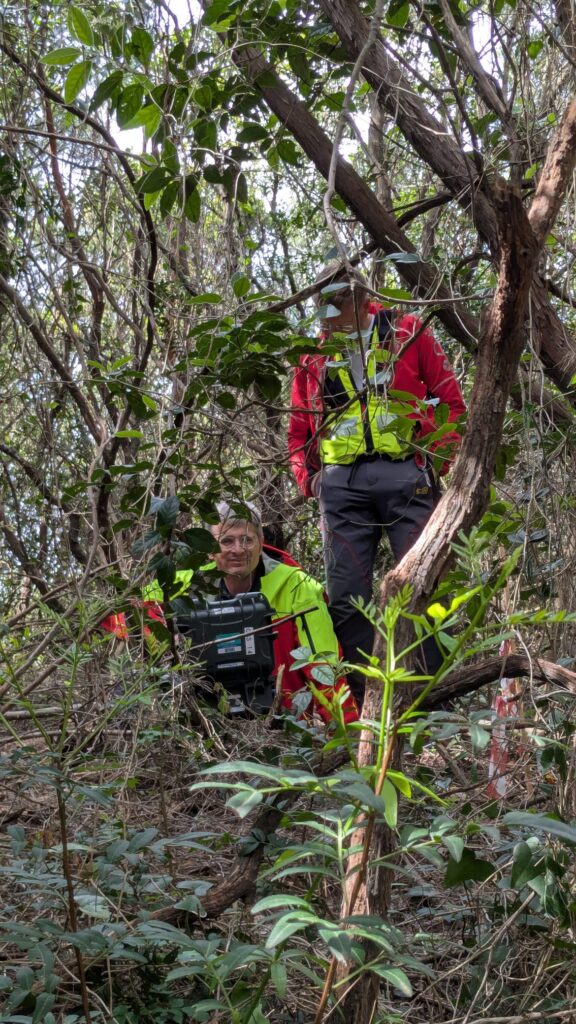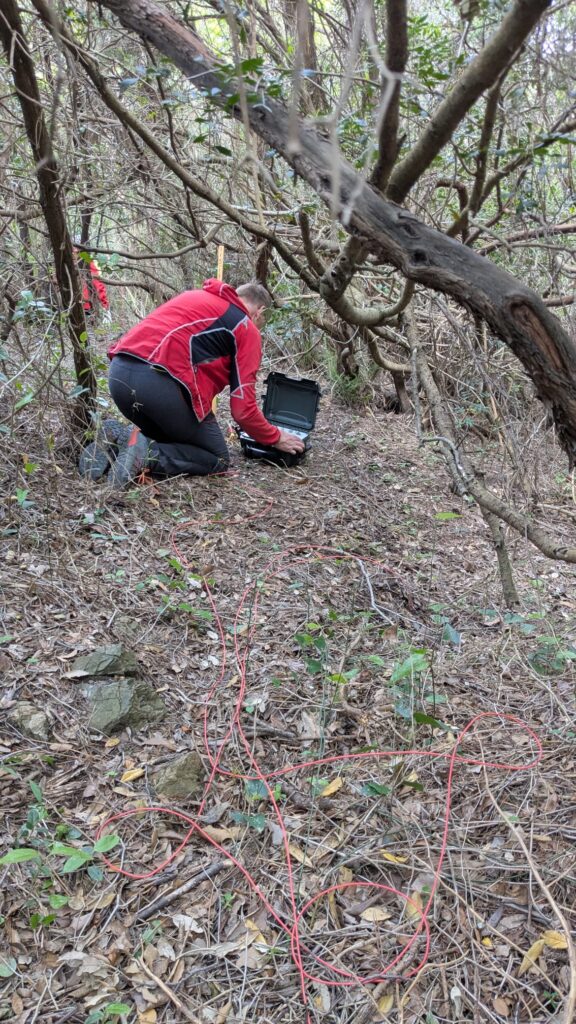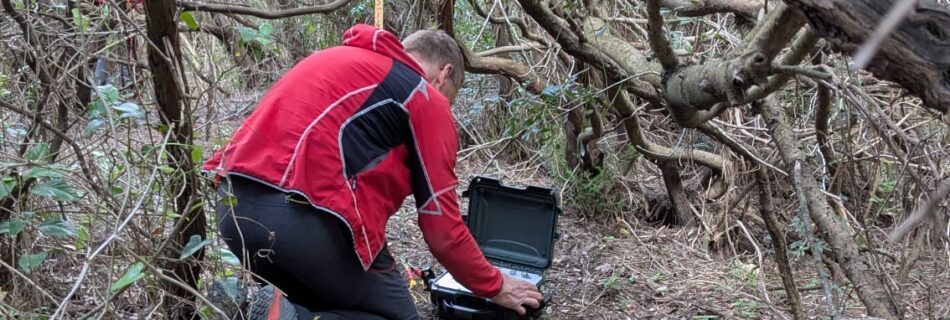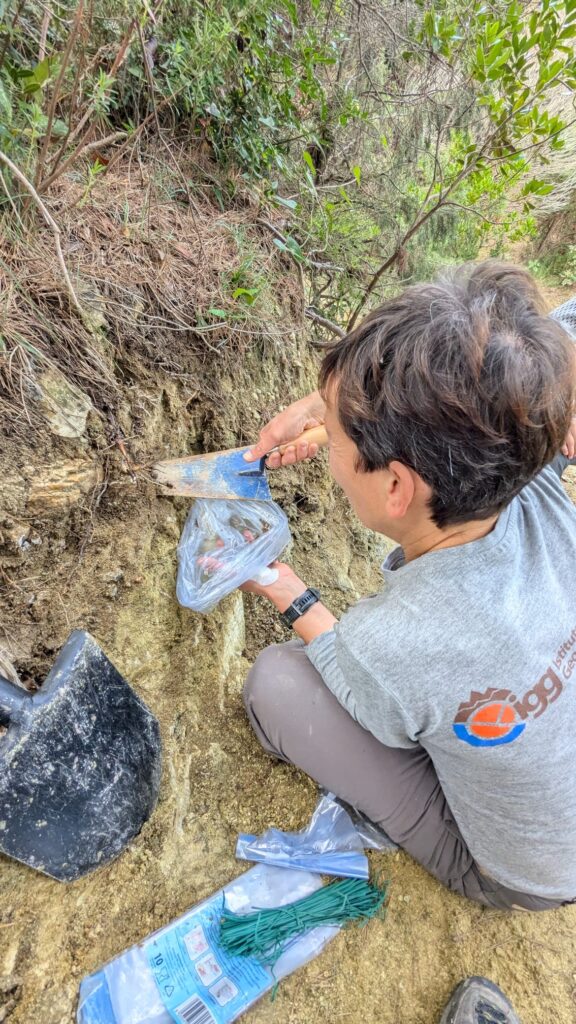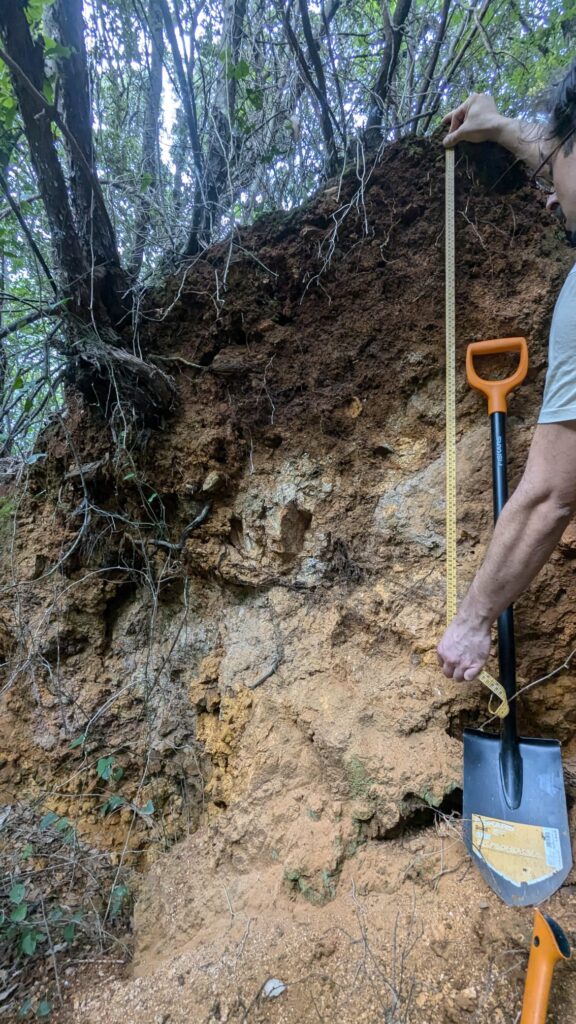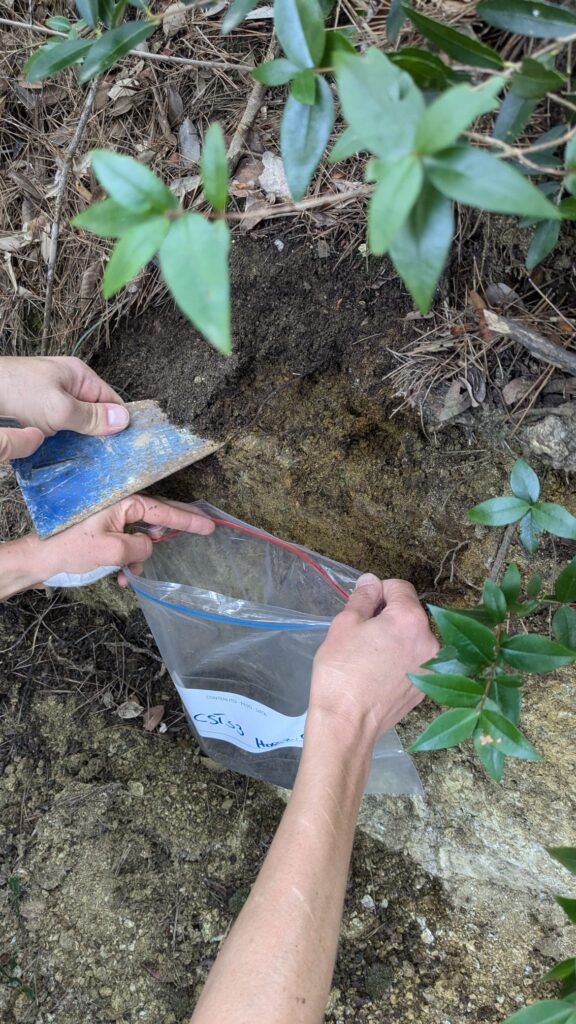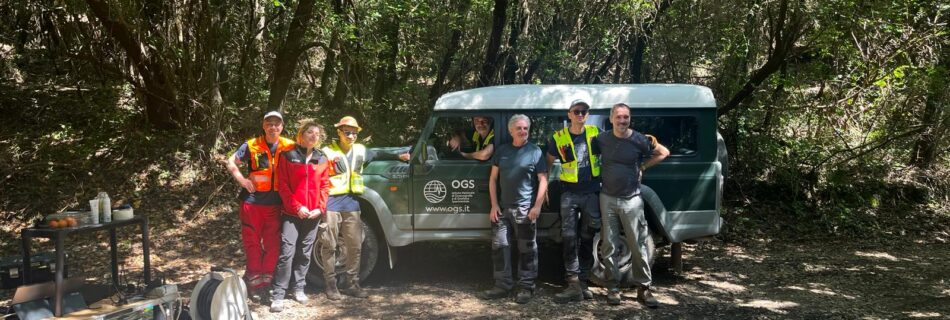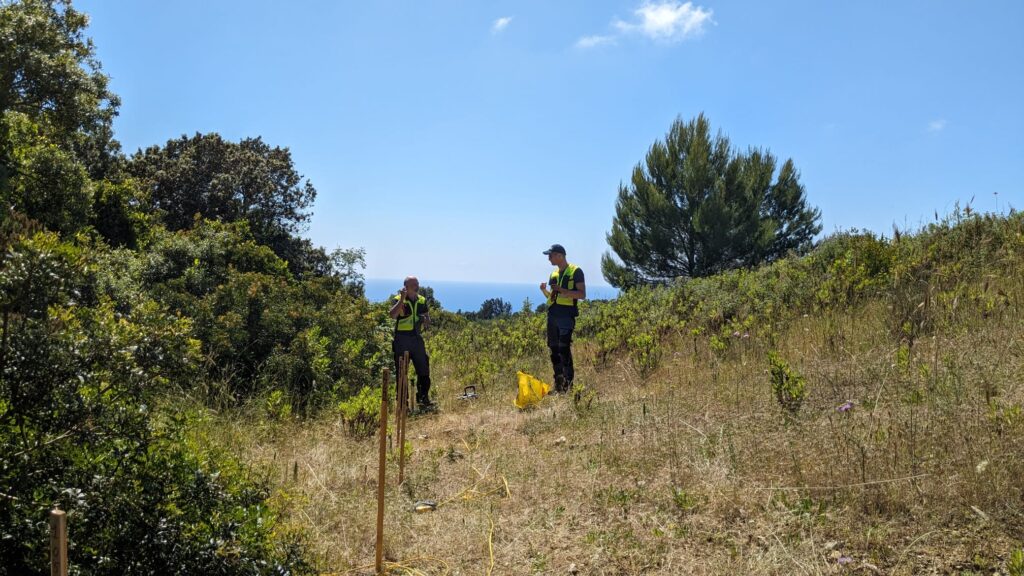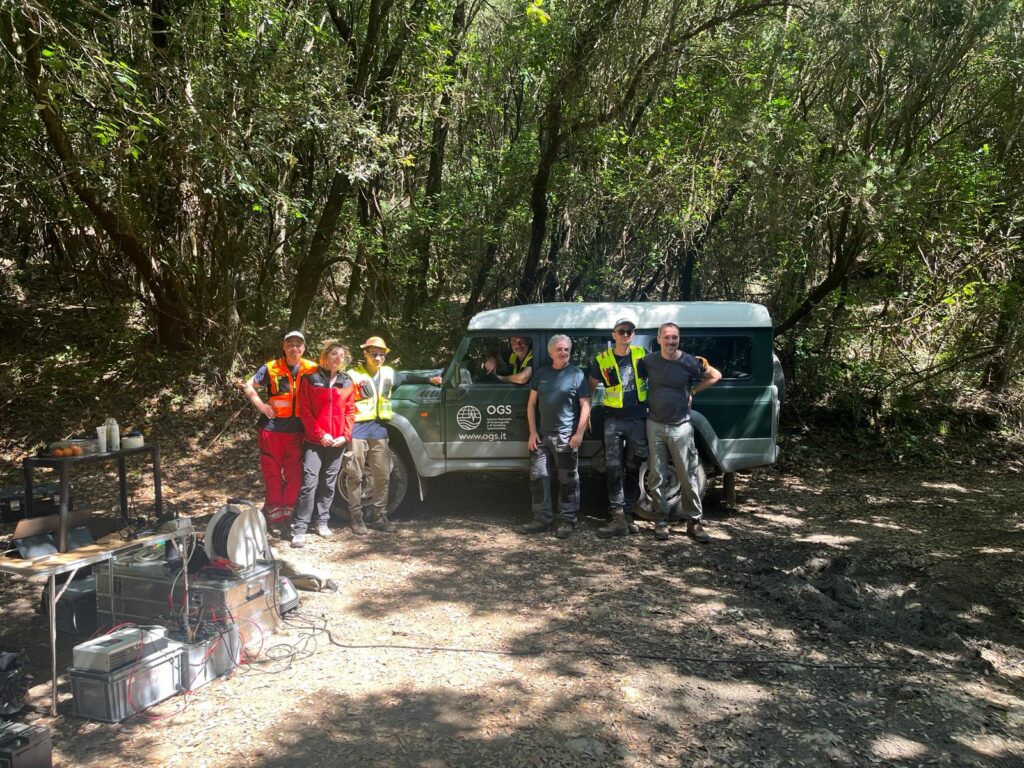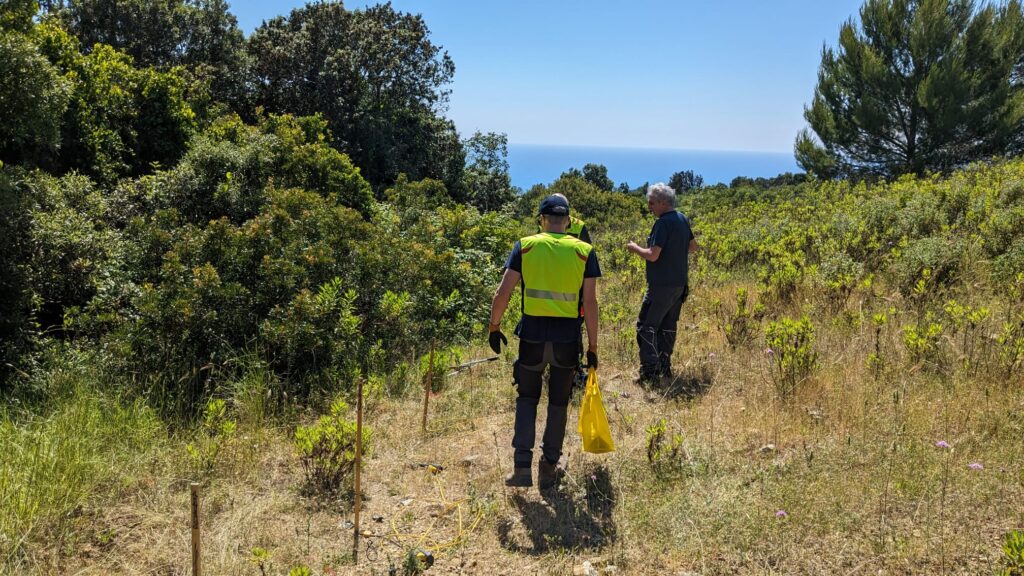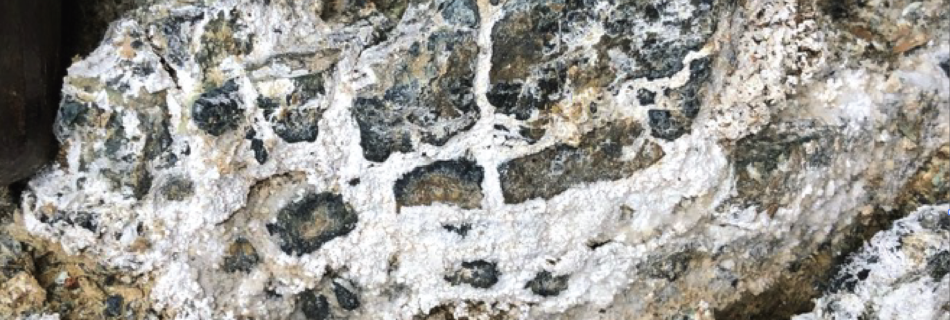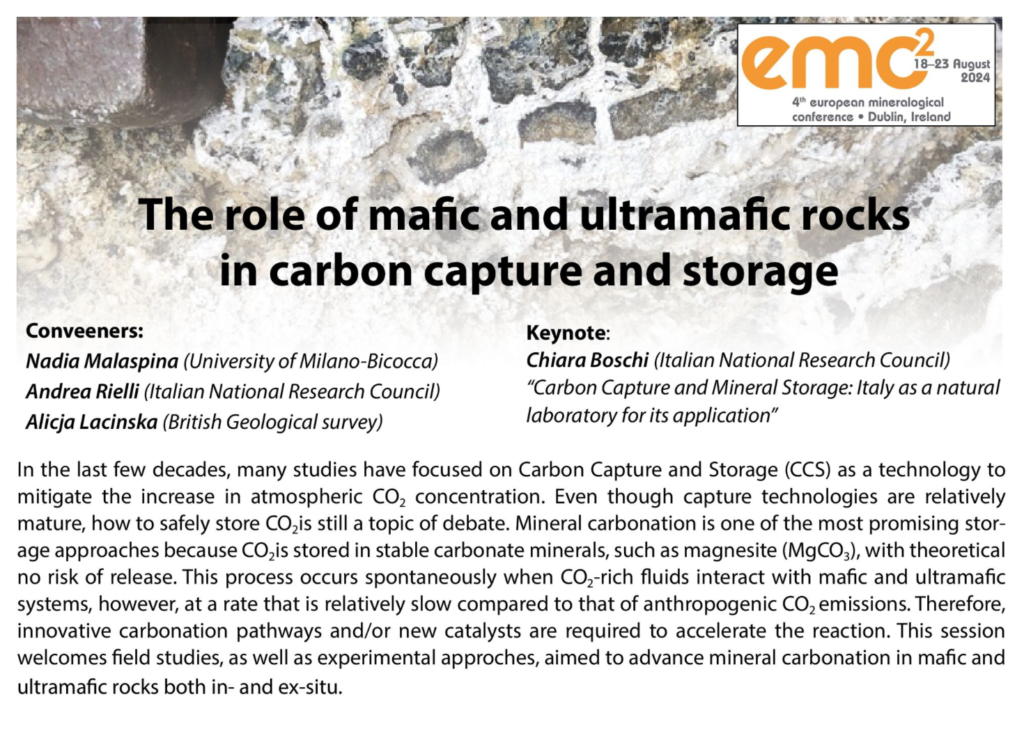We are pleased to announce the successful completion of the second geoelectric survey by the OGS team at the Castiglioncello magnesite mine in Tuscany (Italy), a key step in our ongoing efforts to understand the dynamics of natural mineral carbonation for long-term CO₂ storage.
This new survey focused on a targeted transect across the mineralisation, building on previous work to deliver high-resolution imaging of the subsurface. The data will enable us to refine our understanding of the continuity and depth extent of the magnesite body and associated alteration zones.
This step is essential for enhancing our geophysical model of the deposit, supporting both scientific interpretation and potential future evaluation of the site as a natural analogue for carbon storage.
Stay tuned for further updates as we integrate these results with geochemical and mineralogical data from the 2025 field campaign!
